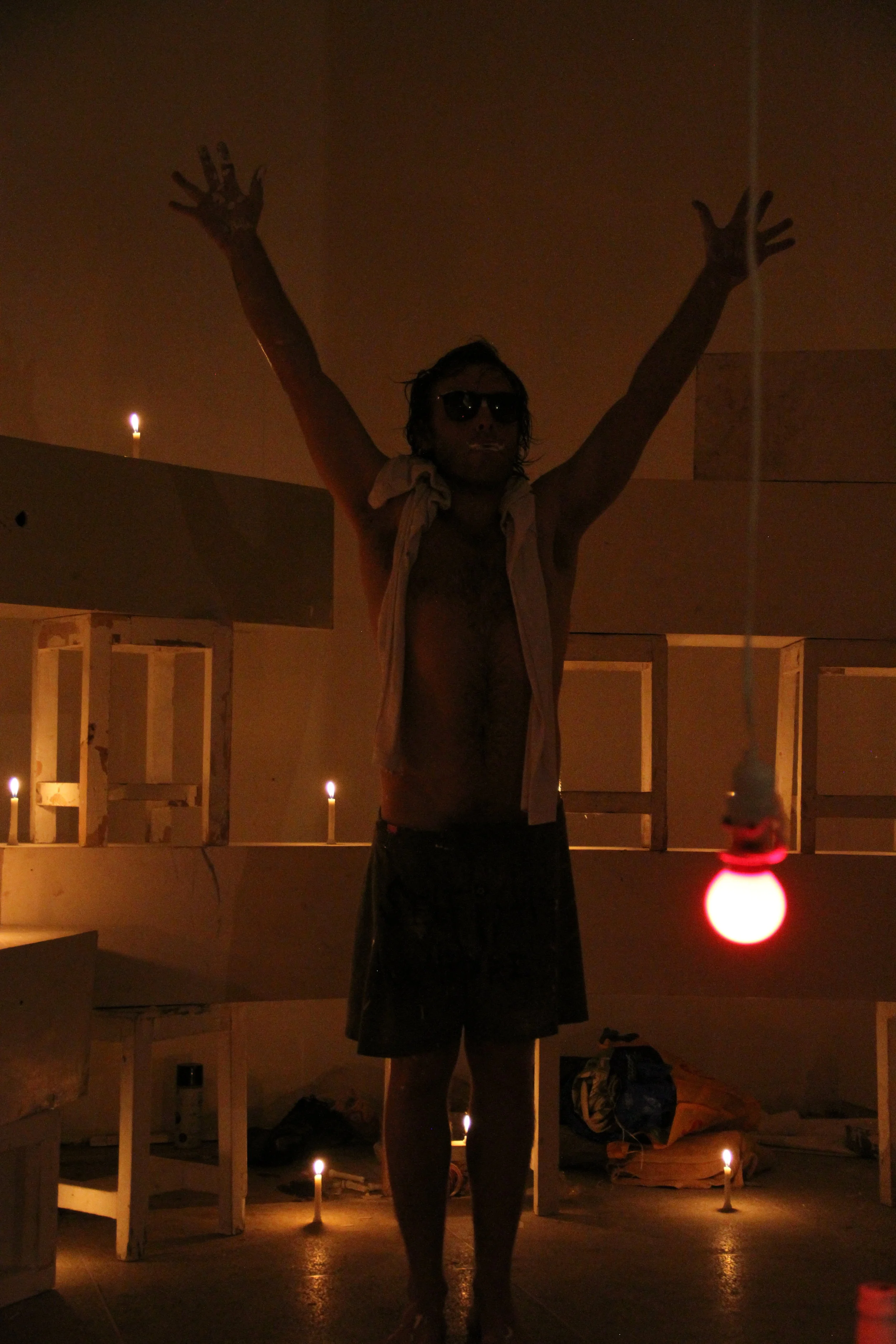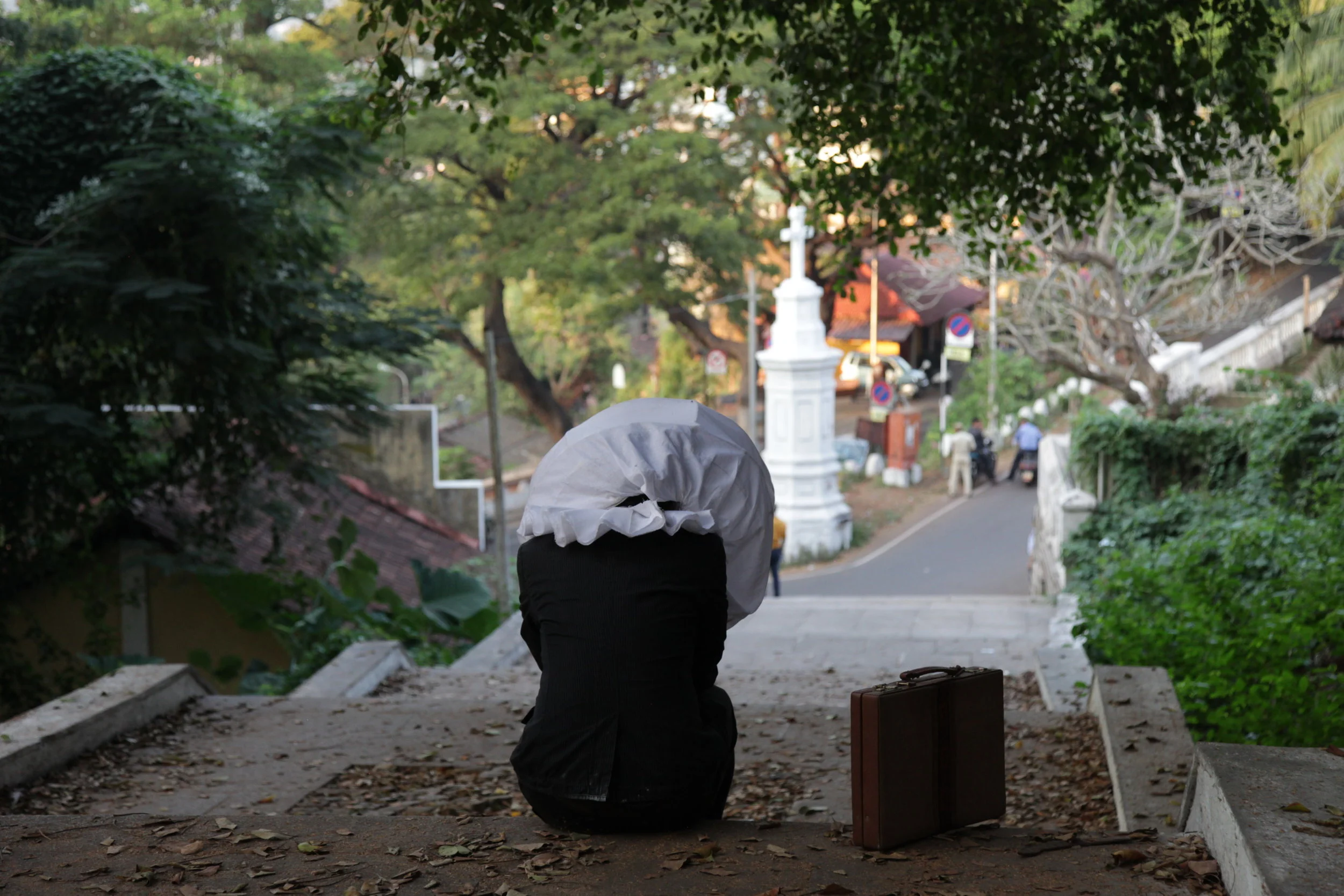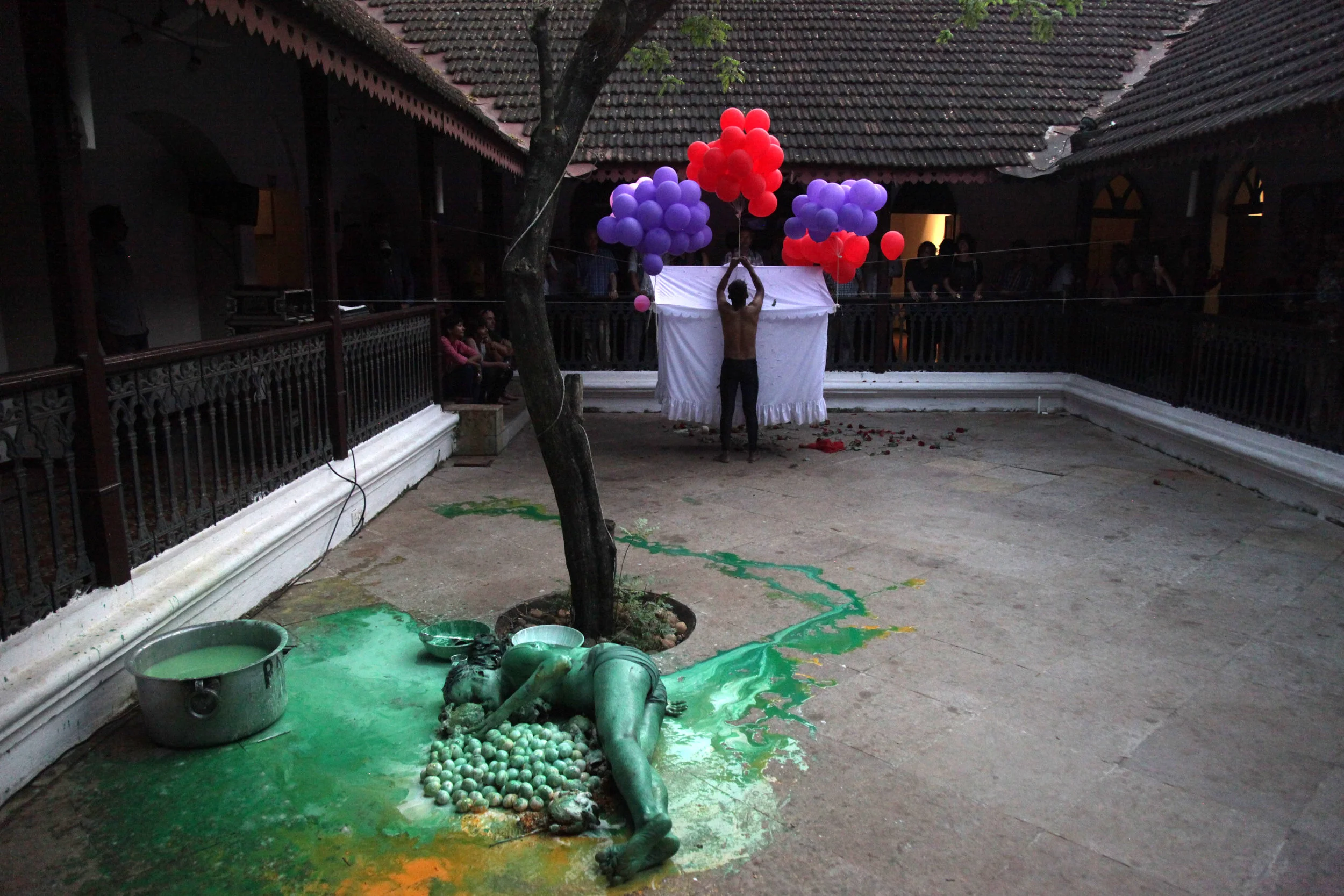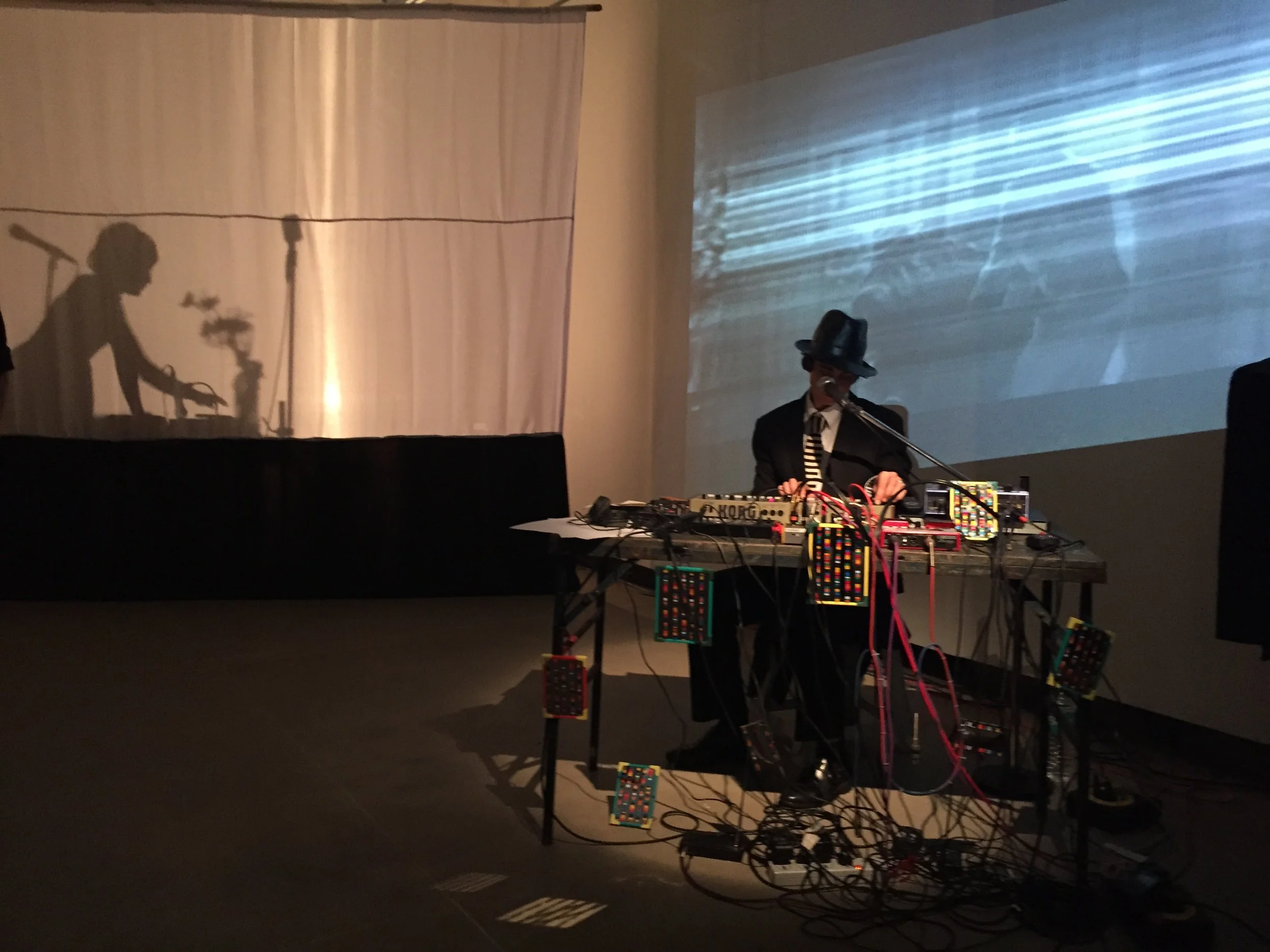


















































Lucid Sleep
Outside the Adil Shah Palace there are two statues: one of the first Chief Ministers of Goa, Dayanand Bandodkar, and the second of Abbe Faria. The figure of Abbe Faria in the understanding of Goa’s identity interests us. Abbe Faria was the first to undertake the scientific study of hypnosis in his major work “Of the Cause of Lucid Sleep or Study of the Nature of Man” (De La Cause du Sommeil Lucide Ou Étude de la Nature de l’Homme). He was born in Candolim, Bardez, Goa in 1756. He traveled with his research to Portugal and France, and was a contemporary of Mesmer (as in the state of being mesmerized). He studied magnetism, working with energy fields around the human body to heal. A monument to him in Panjim represents him as a man dressed in a suit standing imposingly on top of a woman who is lying, in a trance and under his spell. We think artists ideally place themselves somewhere in an altered state that can resemble a state of trance through deep concentration in order to access aspects of themselves that are extraordinary, pure and perhaps even divine.
In contemporary history, Goa has thrived on a significant community of practitioners of the healing arts. Goa is a hub for alternative therapists and healers, yogis and shamans from all over the world engaged in layers of traditions of practices surrounding the body. Realignment of energy fields, psychosomatic processes to engage with life, the body, and the times we live in - the NOW. The concept of transformation and transcendence, to witness ones own change, metamorphosis, to play with that process, to inhabit ones imagined world, these become important.
These liminal states between the conscious subconscious, the journey through dream-time and performance time, ideological position and utopic-ecstatic state, are all investigated. The liminal space that the individual undergoing a rite of passage journeys through might be equated to the inner world spun by the performer - inhabiting a space, a particular location and site, within the frame of the performance. The length of duration makes it possible to consider time stretched, time lapsed and time traveled. We are particularly interested in the discussion of duration.
HH Art Spaces invited 7 artists, who presented long/short durational live works over the course of 8 days. The performers inhabited 3-5 rooms and halls within the Adil Shah Palace, currently a wasteland, with performances over a maximum of 5 days each artist. Each performer has a unique practice and visual conceptual imagination. Each room was a world the artist created with their presence. The performances weaved through the hallways and rooms interspersed in-between rooms with other art works. These were un-choreographed, unique pieces composed live, in-situ by each artist.
Photography: Dheer Kaku

Our Own Private Anthology (Ongoing Project-Series 3), Serendipity Arts Festival
Duration: 4 days
In Our Own Private Anthology, Yasmin Jahan Nupur is seen kneading and dragging a large amount of dough for bread; a live-artwork that deals with time, movement, space, material, body, and action/interaction. Using the body as a means of expression, she aspires to create art where all of the elements are linked together to form a wholesome idea of Beauty, yet leaving space for the viewer to form their own associations and generate new possibilities. The artist refers to the therapeutic potential in performance, where the Self is made open to confrontation at many levels and performance becomes a deeply personal and aesthetic form of Self-empowered political activism.
The action is suggestive of household chores, relegated duties of the female-sex; duties one sees as ‘grandmothers duties’ in traditional family structures. This long duration work is one part in a series in which the artist works with food and perishable materials, exploring the gendered roles of women and men in patriarchal society. This piece is an interactive piece, where viewers are invited to participate in what ensues.

Scales, skins and feathers: Three poisons shapes, Serendipity Arts Festival
For this piece, Uriel Barthélémi created an installation that
combines epileptic video frames, hypnotic lights flux and music.
Developing rhythmical patterns with light and video controlled by the drums and the electronic sound, the very direct expressive tools that he builds create a hypnotic, convulsive and falsely unphased space. Trying to explore in a particular way the synaesthetic experience, the piece is questioning the data flux of our days, that tends to totally absorb the attention capabilities of the human brain.
The fast moving, violent but empty information flux has now become a constant experience. So what does appear when we take it in and distort it through an intense and alive drumming session?
Expressing the emergency of a confounding but stimulating situation, the process was permanent and in continuous movement during the exhibition. Specific performing sessions were organised two times per day to invite everyone to enter the experience.

Chotu Virtual Migration, Serendipity Arts Festival
This work deals with the issue of migration, physical and imagined, across the class and social divide. The artist refers to the mythologies around Goa as a place where people come to be cleansed and refreshed by the sea and the sun, a place where social boundaries are crossed freely, and sexual or spiritual freedoms are not compromised.
While Goa has become a well-known creative hub for alternative
living, this image has also become the basis of its tourism and
coastal economy. Playing with these ideas, Rangher, who sees
himself as a migrant-artist in Goa, creates a live-art installation in
the persona as Chotu. In the title, Chotu (the small one) refers to
the quintessential character present in any everyday Indian tea-stall scenario; it is a nickname given to the youngest employed male labour or wait-staff of an establishment, and has become so persavive in the Indian consciousness that it almost short-of a classification or an identification. Chotu has appeared as a repeating trope in the personas Mr. Ranger plays with in his performances.

The Story of Absence in Presence, Serendipity Arts Festival
Duration: 5 days
The Story of Absence in Presence is a long-duration live art-work
spanning 5 days in which the artist is seen bringing construction
materials into the gallery space to build a structure that he will inhabit. This is a participatory piece, in which the audience is encouraged to enter the structure one-by-one to experience an interior/inner world crafted by the artist.
The artist alludes to the work involved in the making of an artist, the psychic and physical processes that are involved in any individuals access to freedom, self-empowerment, and their own personal truths; memory is excavated and harnessed to release creative potentials.

"TO", Serendipity Arts Festival
This piece addresses the responsibility of us humans to our earth.
It seeks to ponder between the artificial man-made and the natural
earth-given. With this it aims to highlight the notion and intention of
care between humans, since it will only be a communal or relational
gesture to nourish, help, and heal us as well as our planet.
DAY 1/ OPEN
DAY 2 / CHANGE
DAY 3 / CLOSE

NIVRITI, Serendipity Arts Festival
Jeetin Ranger challenges our ideas of intimacy in this long durational live-artwork. Bringing his intimate space (the bed) in the public space (the gallery), Jeetin blurs notions of private and public. Audiences can lay down with the artist, a cuddle for a fee, for a feeling of intimacy and deep connection. Here the audience-participant becomes an integral part of the performance.

Udhaar (Borrow), Serendipity Arts Festival
Durational performace
This piece is a live-art and installation work, concerned with the
complex web of workings of desire, morality and anxiety in our society. Jha sees performance as a potent release, to reclaim ownership of ones own body, time and space. Drawing upon personal narrative, memory, dream, and the every day the artist enters into the dialogue with: the politics of sexuality, (aspiration and seduction), identity politics (existential questions), and social politics (religion and morality: our coding), in his attempts to archive a future that is layered with alternative realities.

FOURTH STUDY FOR THE ECSTASY IN THE LANDSCAPE/TO PUT FEET INSIDE THE SOUL, Serendipity Arts Festival
Space where every single presence is led to experience the global contact with what is around. An action where everyone meets the surface of the other by listening to each other, abandoning to the unknown, experiencing the discomfort of being close to each other or the union in the confrontation by putting the feet in the matter until the you slip completely inside the soul.
The collective action is therefore conceived as a spontaneous development, that cannot be controlled in its duration and in its form, opening up itself to multiple meanings. The audience can get to trace back the evolutionary movement of the earth with his own body until one feels the resonance within the dynamics of human relationships, with the primordial stages of movements of life that are already stored in the memory of the body.
Through a transfer, both physical and emotional, the artist put in place the conflict between the motion of expansion and that of dissolution, testing both the aesthetic and ecstatic dimensions: the topic on which the artist worked during the two day preparation trough the workshop and performance, involving other artists and common people.

‘It is likely the house will be dismantled piece by piece with a large crane and a scaffold to support the remaining structure’, Khoj, Delhi performance, Yuko Kaseki (DE/JAP), Romain Loustau (FR), Nikhil Chopra (IN)

Nikhil Chopra (IN), Romain Loustau (FR), Sajan Mani (IN), Violeta Lisboa (PT)
